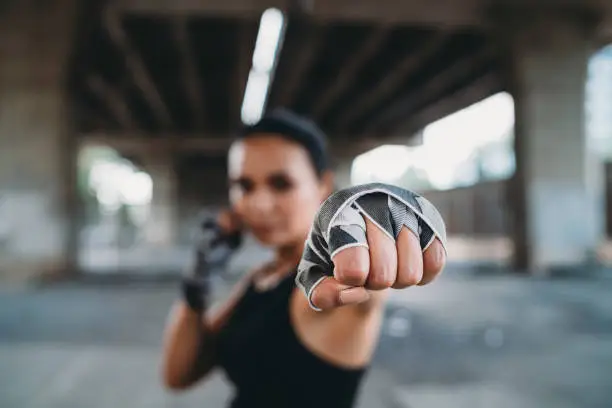How to Avoid Common Fitness Injuries in Women
Staying active and fit is one of the most empowering choices a woman can make, but it can come with...

Staying active and fit is one of the most empowering choices a woman can make, but it can come with risks if not approached properly. Many women face common injuries while working out—ranging from mild strains to more serious joint or muscle damage. Whether you’re a beginner, returning to fitness, or a regular gym-goer, understanding how to avoid these injuries can help you maintain a consistent, pain-free routine.
Understanding the Unique Anatomy and Fitness Needs of Women
Women have different physiological structures than men, including wider hips, different knee angles, and lower average muscle mass. These factors can increase susceptibility to certain injuries, such as ACL tears or lower back pain. Also, fluctuating hormone levels during the menstrual cycle can affect muscle performance, joint stability, and fatigue levels. Recognizing these nuances allows for more effective injury prevention tailored to women’s bodies.
Key Considerations:
- Wider pelvis can affect alignment and knee tracking, increasing the risk of knee injuries.
- Lower bone density makes women more prone to stress fractures.
- Hormonal fluctuations influence flexibility and injury susceptibility during certain menstrual phases.
The Most Common Fitness Injuries in Women
Before diving into prevention, it’s helpful to know which injuries women face most often during fitness activities. These include:
- Ankle sprains and strains from running or jumping.
- Knee injuries, particularly ACL tears in sports or high-intensity workouts.
- Lower back pain due to improper form during weightlifting or core exercises.
- Shoulder strains from resistance training or repetitive movements.
- Wrist injuries, especially in bodyweight workouts like planks and push-ups.
These injuries often result from poor technique, inadequate warm-ups, overtraining, or using inappropriate equipment.
Warm-Up Right to Prevent Wrong Moves
One of the most underestimated yet vital steps in any workout is a proper warm-up. Skipping it puts unnecessary strain on cold, stiff muscles.
Effective Warm-Up Tips:
- Start with 5–10 minutes of light cardio (like brisk walking or jogging).
- Incorporate dynamic stretches such as leg swings, hip circles, and arm circles.
- Gradually increase the intensity to mirror your actual workout (e.g., bodyweight squats before lifting weights).
- Focus on activating the core and glutes, as these muscle groups stabilize the body during many exercises.
Form Over Ego: Technique Trumps Heavier Weights
Lifting heavy weights can be empowering, but it’s also one of the leading causes of injuries when done incorrectly. Always prioritize form, especially when learning new exercises or increasing intensity.
How to Maintain Proper Form:
- Use mirrors or ask for a trainer’s feedback.
- Start with lower weights and focus on controlled movement.
- Engage your core throughout all movements to support your spine.
- Avoid locking your joints—keep a soft bend in the knees and elbows during most movements.
Form breakdown is also common when women follow generic routines not adapted to their fitness level or anatomy. Customizing workouts can reduce risks significantly.
Recovery Is Not Optional: It’s Essential
Fitness progress doesn’t only happen in the gym—it happens during recovery. Overtraining without enough rest increases the risk of overuse injuries and mental burnout.
Recovery Essentials:
- Include rest days in your weekly routine—at least one full day off from high-intensity workouts.
- Use active recovery like walking, stretching, or gentle yoga on lighter days.
- Prioritize hydration and nutrition, especially protein intake to repair muscles.
- Get adequate sleep—your body rebuilds while you rest.
Ignoring recovery signs like soreness, joint pain, or fatigue can lead to chronic issues down the line.
Cross-Training for Total Body Balance
Doing the same workout repeatedly not only gets boring but can cause muscle imbalances and overuse injuries. Cross-training ensures you work different muscle groups and build overall fitness without strain.
Ideal Cross-Training Mix:
- Combine cardio (running, cycling) with strength training and flexibility work (yoga or Pilates).
- Integrate functional movements like kettlebell swings or medicine ball slams.
- Try low-impact alternatives like swimming or rowing if you experience joint pain.
Rotating between types of workouts also improves coordination, balance, and athleticism, making you less likely to get injured in everyday activities.
Footwear, Equipment, and Environment Matter
The wrong gear can lead to discomfort and long-term injuries. Invest in the right support for your workout style.
Tips for Proper Equipment Use:
- Wear shoes designed for your activity—running shoes differ from training or court shoes.
- Replace athletic shoes every 300–500 miles or 6 months, whichever comes first.
- Use resistance bands, mats, and dumbbells suited for your body size and strength.
- Avoid uneven or slippery surfaces—especially during HIIT or plyometric training.
Even a simple change like switching to supportive shoes can reduce shin splints, ankle rolls, and lower back pain.
Strengthen Supporting Muscles—Not Just the Obvious Ones
Often, injuries arise when smaller stabilizing muscles are weak, even if your primary muscles are strong. For example, strong quads but weak glutes or hamstrings can increase knee stress.
Smart Muscle Strengthening Strategy:
- Add isolation exercises for glutes, core, and shoulders (e.g., glute bridges, planks, face pulls).
- Don’t neglect posterior chain training—deadlifts, hip thrusts, and rows balance front-heavy workouts.
- Train with unilateral movements (single-leg or arm) to correct imbalances and boost stability.
This kind of targeted training leads to better posture, balance, and injury resistance.
Listen to Your Body’s Signals—Not Just Your Schedule
It’s tempting to power through pain, but discomfort is your body’s way of signaling something’s wrong. Distinguish between soreness and real injury risk.
Know the Difference:
- Muscle soreness typically feels dull and appears a day after the workout.
- Sharp or stabbing pain, especially during exercise, is a warning sign.
- Swelling, numbness, or limited mobility are serious red flags.
- Use RICE (rest, ice, compression, elevation) for minor injuries and see a doctor for anything persistent.
Adjust your workout accordingly—there’s no shame in skipping a session to protect your long-term health.
Embrace Preventive Practices Like Mobility and Flexibility Training
Mobility and flexibility are often overlooked in women’s fitness but play a huge role in injury prevention. Tight muscles or stiff joints can lead to compensation and eventual strain.
Flexibility Practices That Work:
- Incorporate static stretching post-workout to lengthen muscles and reduce tightness.
- Try foam rolling to improve circulation and reduce muscle knots.
- Add mobility drills to your warm-up—ankle circles, hip openers, and thoracic twists.
- Include yoga or stretching-focused classes 1–2 times a week to stay limber.
This practice increases your range of motion, making your regular workouts safer and more effective.
Consider Professional Guidance When Needed
Many injuries stem from lack of guidance, especially for beginners or women returning after a long break. A qualified personal trainer or coach can help design a program that matches your goals and protects your body.
Benefits of Working with a Pro:
- Personalized fitness plans that account for your strengths and limitations.
- Ongoing feedback on your form and technique.
- Motivation and accountability.
- Safe progression based on your individual pace and progress.
Even a few sessions with a knowledgeable trainer can set the foundation for years of safe training.
Empowerment Through Fitness—and Protection
Fitness is not just about aesthetic goals—it’s also about strength, resilience, and self-protection. Programs like self defense classes women in Hialeah, FL not only offer physical training but also provide tools for safety, awareness, and confidence. These types of classes blend fitness with practical real-world application, making them an excellent addition to any woman’s workout routine.
Conclusion: Injury-Free Is the Key to Longevity in Fitness
Injuries can derail your momentum, shatter your confidence, and take time to heal. But with proactive planning, proper technique, and attention to your body, they’re largely preventable. Fitness should be something you look forward to, not fear. By focusing on injury prevention tailored to women’s needs, you can build strength, endurance, and flexibility in a way that’s sustainable for life.
MMA MASTERS offers training in MMA, Brazilian Jiu-Jitsu, Muay Thai, Boxing, Judo, and Wrestling for all levels. Whether your goal is self-defense, improved athleticism, or general fitness, their programs provide expert guidance in a safe, empowering environment. Their mission is to build confidence through achievement while promoting discipline, self-respect, and community.





